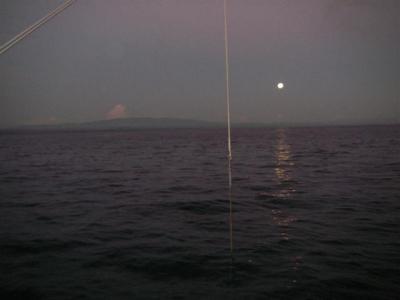We were up early yet again this morning, doing all the last minute get ready stuff for today’s big trip inland. We had a large, eclectic breakfast made up of the odds and ends that were still left in the refrigerator when we shut it off.
At 0830, Tim arrived. We showed him how to run the generator and what the normal water level is in the bilge. He took us to shore. Our car was supposed to be delivered to us at Land and Sea at 0900. At 0940, the car finally arrived and by 1000 the paperwork was done and we were on the road. Our rental car is a little Suzuki Alto, powered by what we are sure is two hamsters on a wheel under the hood. We have our doubts it can make it up Costa Rica’s mountainous landscape.
We checked at two different places for maps, and neither had one. Sigh. We had to work off the maps in Lonely Planet, which are small and only have details for selected areas. Today’s plan was to drive to Heredia, just north of the capital city, San Jose. Judging from the map, we had estimated it would be a 4 hour drive. Katie and Tim told it would be closer to 6. It actually took 8.
To get out of Golfito, you can take an unpaved road over the mountains, or you can take a nicely paved road south to the end of the mountain range, then head inland and back north. We opted for Continue reading

